Do you like the trade for Jose Quintana?
Well, you should.
If you’ve forgotten about Quintana, it’s understandable. He had a terrible 2021 season, getting punished for a 6.43 ERA while pitching for the Angels and the Giants. He didn’t draw a lot of interest this past offseason, and signed a one-year deal with the Pirates for $2 million. But with the Pirates sinking into last place in the NL Central this season, it wasn’t easy to spot Quintana under all that water as the Jolly Roger descended into the river.
So here’s what you should know about Quintana’s performance through 20 starts and 103 innings in 2022:
➤ Quintana has 2.1 Wins Above Replacement, the FanGraphs version. That WAR is higher and better than that of Miles Mikolas (2.0) and Adam Wainwright. Quintana’s current fWAR ranks above an extensive list of higher-profile starting pitchers including the coveted Frankie Montas, Pablo Lopez, Julio Urias, Tony Gonsolin; Madison Bumgarner, reigning AL Cy Young award winner Robbie Ray, Jon Gray, Carlos Carrasco, Zac Gallen, Kyle Freeland, Kyle Gibson, Sean Manea, Chris Bassitt, Jameson Taillon, Charlie Morton, Nick Pivetta, Zach Plesac, Jose Berrios, Taijuan Walker and Marco Gonzalez. There are more. And Quintana and Tyler Mahle have the same amount of WAR.
➤ Quintana has a fine standard ERA of 3.50. But his 3.23 fielding-independent ERA (FIP) ranks 18th among qualifying MLB starters, just behind Gerrit Cole. Quintana’s FIP is superior to that of Montas, Manea, Lopez, Gonsolin, Urias, Mahle, Ray, Freeland, Gibson, Gallen, Bassit, Bumgarner, Morton, Jose Urquidy, Joe Musgrove, Nestor Cortes, Tyler Anderson, Corey Kluber — and Mikolas and Wainwright.
➤ Your eyes did not fail you. It is true: as Quintana moves into the St. Louis rotation, he ranks No. 1 among Cards starters in fWAR and FIP and is 2nd to Mikolas in ERA+.
Don’t call this a dumpster dive.
Quintana in 2022 is having a much better season than Jon Lester and J.A. Happ when the Cards picked up the lefty starters at the 2021 trade deadline. At the time of the trades in ‘21, Lester had a 5.02 ERA and 5.43 FIP, and Happ had a 6.77 ERA and 5.42 FIP. With St. Louis, Lester and Happ came through in a way that exceeded even the Cardinals’ expectations.
The Cardinals added an experienced starter that’s having a season that’s equal to Wainwright and Mikolas in many ways – and then some.
Quintana is tied for 26th among MLB starters in WAR, ahead of all of the bigger names I cited. He rates well in ERA and FIP. He gives the Cardinals a third rotation presence – along with Mikolas and Waino – that’s made 20+ starts this season.
Other plusses:
– Quintana has faced 432 batters this season and given up only seven home runs, allowing one homer for every 47 at-bats. His home-run rate of 0.61 allowed per 9 innings is eighth-best among MLB starters. Only 1.6% of batters faced by Quintana this season have taken him deep.
– Quintana’s ground-ball rate, 45.5 percent, is right there with Wainwright (46%) and Mikolas (44.5%).
– Quintana isn’t a big strikeout guy, but his average of 7.8 strikeouts per 9 innings is decent. But he has a very good walk rate of 2.7 per 9 innings.
— Quintana has enticed hitters to chase non-strikes at a rate of 35.8 percent, which ranks 16th among qualifying MLB starters. Because of that, his swinging-strike rate (11.3%) is superior to that of Mikolas (8.3%) and Wainwright (6.9%.)
— Quintana shuts down LH batters (.506) and holds his own against RH batters (.712 OPS.) That .712 OPS against him by right-side hitters is virtually the same as Waino’s .715.
– Quintana should benefit from pitching in front of a St. Louis defense that ranks 2nd in the NL with 40 runs saved. The Pirates rank 10th in the NL with six runs saved. But the gap is much wider when you factor in Quintana’s high ground-ball rate and the excellence of the STL infield. Cardinals infielders have combined to save 43 runs with their defense. Pirates infielders are collectively a minus six, costing their pitchers six runs. Huge difference in quality. Quintana will like this.
If you’re looking for minuses, there are a few. Quintana doesn’t pile up heavy innings, averaging 5.1 innings per start. But he’s increased that average to 5.75 innings over his last seven starts. All in all, he’s worked six-plus innings in five starts, pitched into the 6th inning in nine starts, and provided at least five innings in 14 of 20 starts. But he takes the ball and goes to the post. Just having a dependable veteran that will start – like clockwork – every fifth day is a positive addition for an unstable rotation.
Another note about the innings: the Pirates were reluctant to allow Quintana to face the opponent’s lineup for a third time in the game. He’s faced only 72 batters on the third time through this season, but they haven’t done much damage, hitting .206 with a .608 OPS. I’ll be curious to see if manager Oli Marmol will try to push it more often and allow Quintana to go deeper into games – if his performance warrants it.
Quintana has a 2.42 ERA at home and an inflated 5.22 ERA on the road. But here’s the deal: his fielding-independent ERA on the road is a more revealing 3.64. And he’s pitched only 39.2 innings on the road compared to 63.1 innings at home. Quintana has pitched well in five of his eight road starts. Three poor road starts inflated his ERA.
To get Quintana, the Cardinals sent pitcher Johan Oviedo and corner infield prospect Malcolm Nunez to Pittsburgh. Oviedo has impressed in a relief role this season, but wasn’t a factor in the rotation – and most likely would have served as a reliever again in 2023. You have to give up something, and Oviedo was expendable. Nunez, 21, has powered up in his second consecutive season at Double A Springfield. Nunez could evolve into a lineup regular for the Pirates in the future, but the Cardinals had many prospects rated above him. The Cards could regret trading Nunez at some point, but that’s the chance you take. There are no 100% guarantees in the trade market. It was absolutely imperative for the Cardinals to do something to improve their rotation. And the poor planning before the season left them vulnerable, and that’s why they had to go for starting pitching. The front office could have avoided this by signing any number of low-cost starting pitchers last offseason – including Quintana.
The Cardinals also received RH reliever Chris Stratton in the deal. He has a terrible 5.09 ERA in 40.1 innings for the Pirates this season, but his fielding-independent ERA is 3.61 this season … and .361 over the last three seasons. That said, he has brutal splits against LH batters this year – .375 average, .992 OPS, and a poor 15.5% strikeout rate. He’s respectable against RH batters, allowing a .263 average and .702 OPS with a 23.6% strikeout rate. This is a depth move, which is always smart. And if Marmol uses him correctly Stratton could become a decent asset.
The Pirates did the right thing here, flipping Quintana for younger talent that could be part of their future. The Cardinals did what they had to do. This trade worked for both parties.
I have no idea why anyone cares that these two NL Central teams made a deal with each other – as if such transactions are forbidden by federal law or something. Two NL Central teams cooperated on a relatively low-level deal that fit their respective needs at this time. A more prominent, risk-filled deal with big-name talent would be less likely to occur between division rivals … but this trade is nothing like that.
The 33-year-old Quintana can become a free agent after the season. He fits the classic definition of the term “rental.” But he should be a calming presence in a rotation that’s been roiling all season. The Cardinals are stronger after this move because Quintana is clearly an upgrade over Dakota Hudson as the de facto No. 3 starter behind Wainwright and Mikolas. That said, the Cardinals need more.
This was a nice start to STL’s participation in trade-deadline madness. But it can’t be the end. There’s still time to make moves, and the Cardinals cannot sit back.
Thanks for reading …
–Bernie
Bernie invites you to listen to his opinionated sports-talk show on 590-AM The Fan, KFNS. It airs Monday through Thursday from 3-6 p.m. and Friday from 4-6 p.m. You can listen by streaming online or by downloading the show podcast at 590thefan.com or the 590 app which is available in your preferred app store.
“Seeing Red,” my weekly podcast on the Cardinals with Will Leitch, is available on multiple platforms including Apple and Spotify. Please subscribe.
Follow Bernie on Twitter @miklasz
Please email your “Ask Bernie” questions to BernScoops@gmail.com
All stats used here were sourced from FanGraphs, Baseball Reference, Stathead, Bill James Online, Fielding Bible, Baseball Savant, Brooks Baseball Net and Spotrac.
For the last 36 years Bernie Miklasz has entertained, enlightened, and connected with generations of St. Louis sports fans.
While best known for his voice as the lead sports columnist at the Post-Dispatch for 26 years, Bernie has also written for The Athletic, Dallas Morning News and Baltimore News American. A 2023 inductee into the Missouri Sports Hall of Fame, Bernie has hosted radio shows in St. Louis, Dallas, Baltimore and Washington D.C.
Bernie, his wife Kirsten and their cats reside in the Skinker-DeBaliviere neighborhood of St. Louis.



